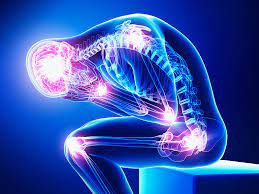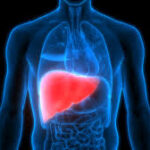Many of us have heard someone claim they have a “high pain threshold,” often implying a unique toughness or resilience. But does this idea hold up under scientific scrutiny? Recent studies reveal that pain perception is a multifaceted experience shaped by biological, psychological, and social factors.
What Is a Pain Threshold?
The term “pain threshold” refers to the point at which a stimulus—be it heat, pressure, or cold—becomes painful. It’s distinct from “pain tolerance,” which measures how much pain someone can endure before seeking relief. These terms, though often confused, describe different aspects of pain perception, with significant implications for medical research and treatment.
Biological Factors That Shape Pain Thresholds
Pain thresholds are influenced by a variety of biological components, including genetics, hormones, and the nervous and immune systems.
1. Sex and Gender Differences
Studies show that men often report higher pain thresholds than women, which may be linked to hormonal differences like testosterone. However, societal norms also play a role, with men often expected to display stoicism, potentially influencing their reporting of pain.
2. The “Redhead” Gene
Intriguingly, some research suggests that people with red hair, linked to the MC1R gene variant, may experience pain differently. For example, redheads might have a lower pain threshold for heat but a higher one for electrical stimuli. However, the mechanisms behind these findings remain unclear.
3. Chronic Pain and Central Sensitization
In cases of chronic pain, individuals often have lower pain thresholds due to a phenomenon called central sensitization. This condition involves the nervous system becoming hypersensitive to pain stimuli, although it’s uncertain whether low thresholds precede chronic pain or develop later.
4. Immune System Influence
The immune system also affects pain thresholds. Inflammatory responses, such as those triggered by injuries or illnesses, can lower thresholds, making even minor stimuli feel painful. For instance, many people reported heightened sensitivity during COVID-19 due to inflammation-induced central sensitization.
Psychological and Social Influences on Pain
Psychological factors like anxiety, fear, and stress are closely tied to lower pain thresholds. Conversely, practices like mindfulness and relaxation have been shown to raise them.
Social and cultural norms further shape pain perception and expression. While some cultures encourage stoicism, others normalize openly expressing discomfort. These cultural differences influence how pain is treated in healthcare settings, often contributing to disparities. For example, women and individuals from marginalized groups frequently report having their pain dismissed by medical professionals.
Implications for Health Care and Recovery
Understanding pain thresholds is more than an academic pursuit—it has tangible consequences for medical care. Misjudging someone’s pain can lead to inadequate treatment or reliance on unnecessary painkillers. A more nuanced understanding of pain, encompassing genetics, psychology, and culture, could pave the way for personalized, empathetic care.
As researchers continue to explore the complexities of pain thresholds, they aim to develop tailored treatments that consider the whole person, ultimately improving outcomes for patients across diverse backgrounds.
The Takeaway: Pain is as unique as the people who experience it, and breaking down misconceptions about pain thresholds is a critical step toward equitable and effective healthcare.











